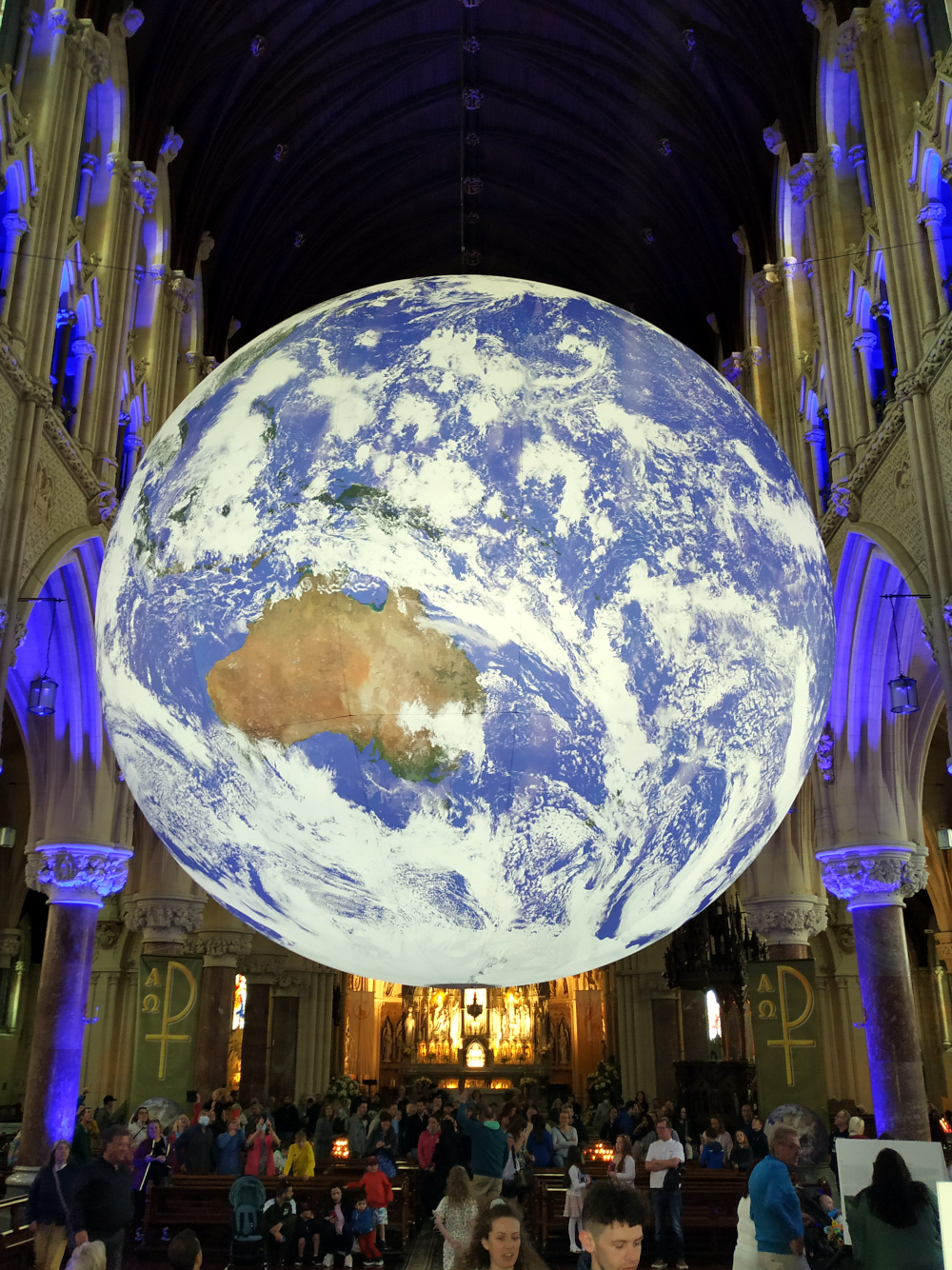

Luke Jerram’s illuminated sculpture of the Earth, Gaia, was installed in St Colman’s Cathedral, Cobh as part of the Cork Midsummer Festival. It is hard to convey in images how awe-inspiring this perspective on our little home in the universe is. The juxtaposition of the fragile Earth with the alpha and omega (ΑΩ) pennants is especially poignant, our lifetimes just a blink in the lifetime of the planet. The event drew plenty of very positive coverage (in the Irish Examiner and elsewhere) and plenty of viewers.
This post uses some imaging techniques to explore the motion of the sculpture and its viewers within and outside the cathedral.
Gaia is a huge piece, 7 metres in diameter and is evenly illuminated from within. The sculpture rotates once every 4 minutes (about 360 sculpture days in every Earth day). The cathedral was busy on the day I made these images, with almost 60 visitors per minute at its busiest, with excellent flow thanks to the diligent stewards.

The sensory immersion was incredible with so many people, united in their interest in this one focus of attention. People were directed clockwise from one entrance, around a complete circuit of the periphery of the cathedral, past the altar, and out of a separate entrance. The central aisle and large area in the centre were available for people to divert into a melee of selfies, conversations and excitement. The narrower, less accessible pews were a haven of (relative) calm.
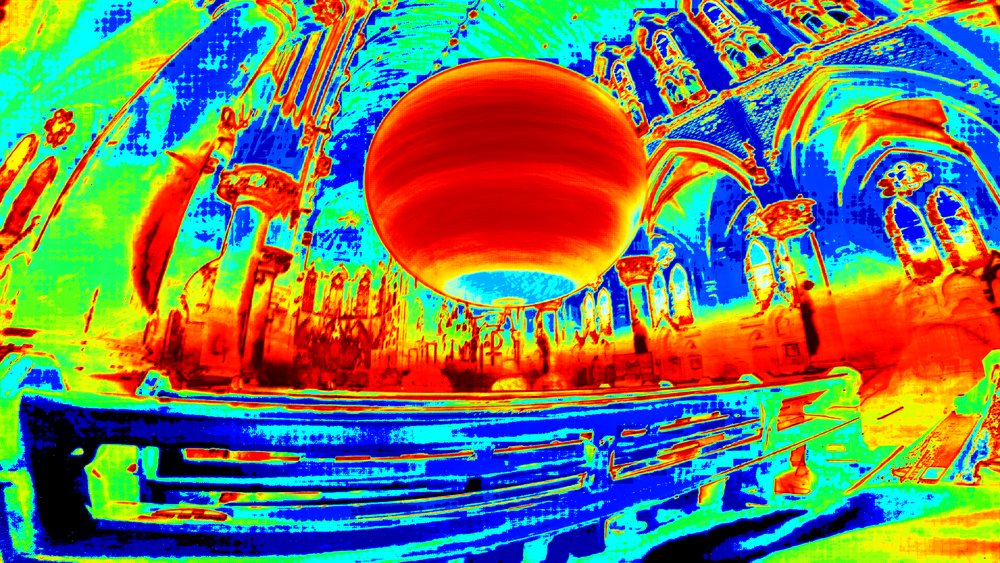
This motion intensity heatmap from the rear-left of the cathedral displays the movement of the Gaia sculpture, above crowds moving around the periphery of the cathedral and within the central aisle (red and dark red representing the most intense motion), with peaceful pews (in blue to dark blue where it was most calm).
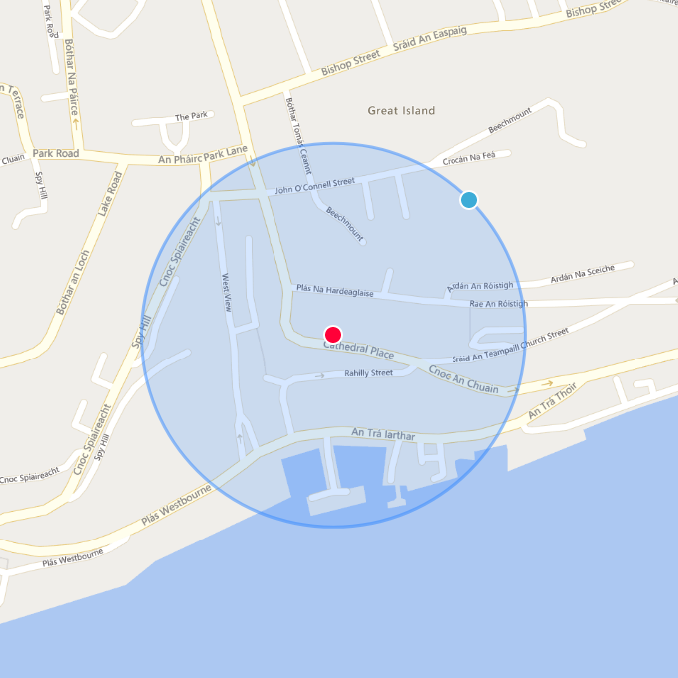
The Moon would have a diameter of about 2 metres and an orbital radius of about 214 metre on the same scale as the 7-metre Gaia sculpture – passing over the harbour, Spy Hill, Beechmount and Harbour Hill.
Each centimetre of Gaia’s surface is equivalent to 18 kilometres of Earth – enough to enclose Cork City, Ballincollig, Carrignavar, Cobh and Carrigaline under a fingerprint.

As Gaia turns, the sculpture reveals an image of the Earth and cloud cover gathered by satellite cameras. As the Gaia turns overhead, people pass under the sculpture adding detail to the slitscan imagery.
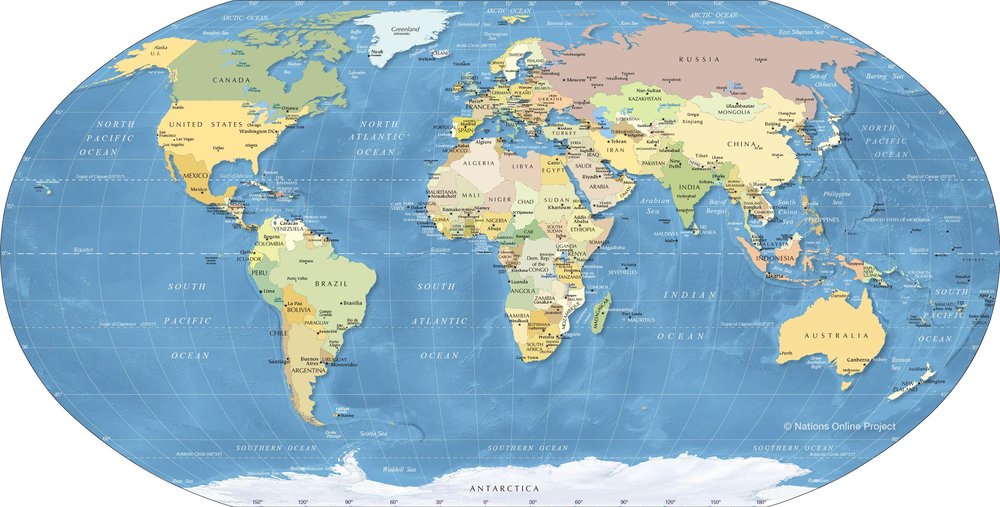
The image of Earth portrayed by Gaia is somewhat unfamiliar from our perspective below the South Pole, giving prominence to the Southern hemisphere rather than the Northern emphasis in most of our cultural connection with maps. The comparative vastness of the oceans and the minute speck of Ireland is overwhelming.
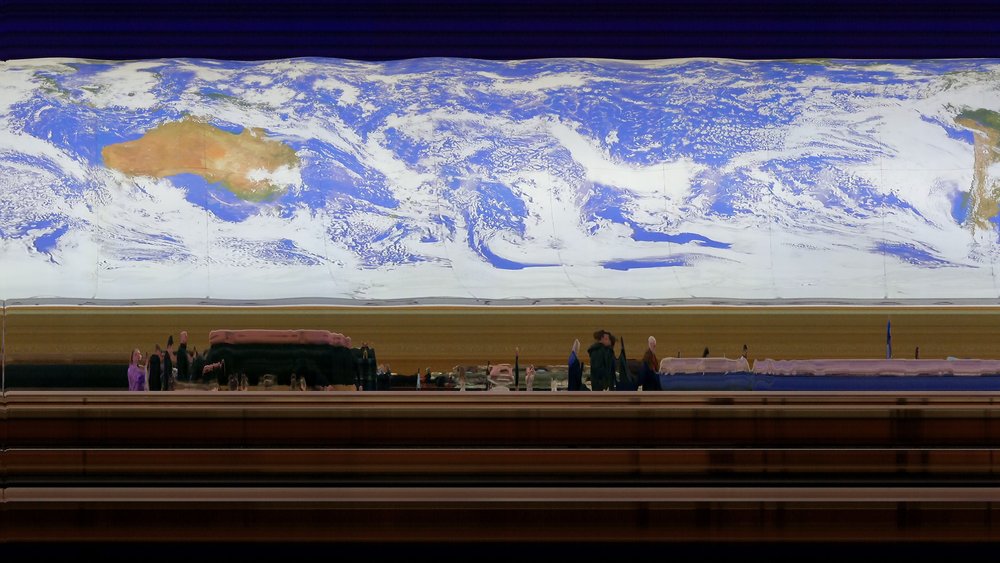
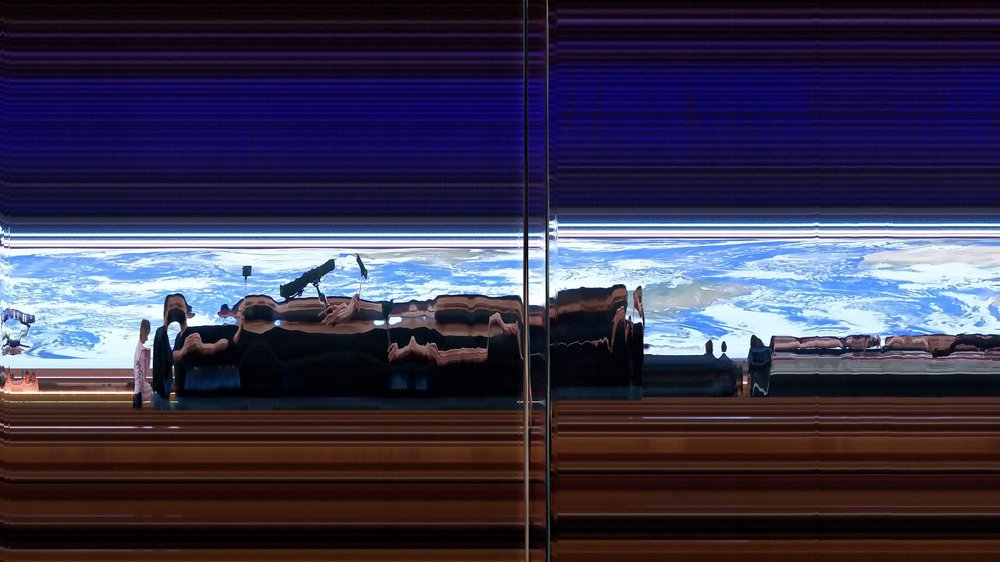
These images, gathered with 4K video recording, have a phenomenal amount of detail, revealing so many of the ways that people approach, contemplate and engage with the sculpture. In amongst the melee of people taking selfies, videos and posing each other to support Gaia, there were people sitting quietly and meditatively watching many Gaia days pass.
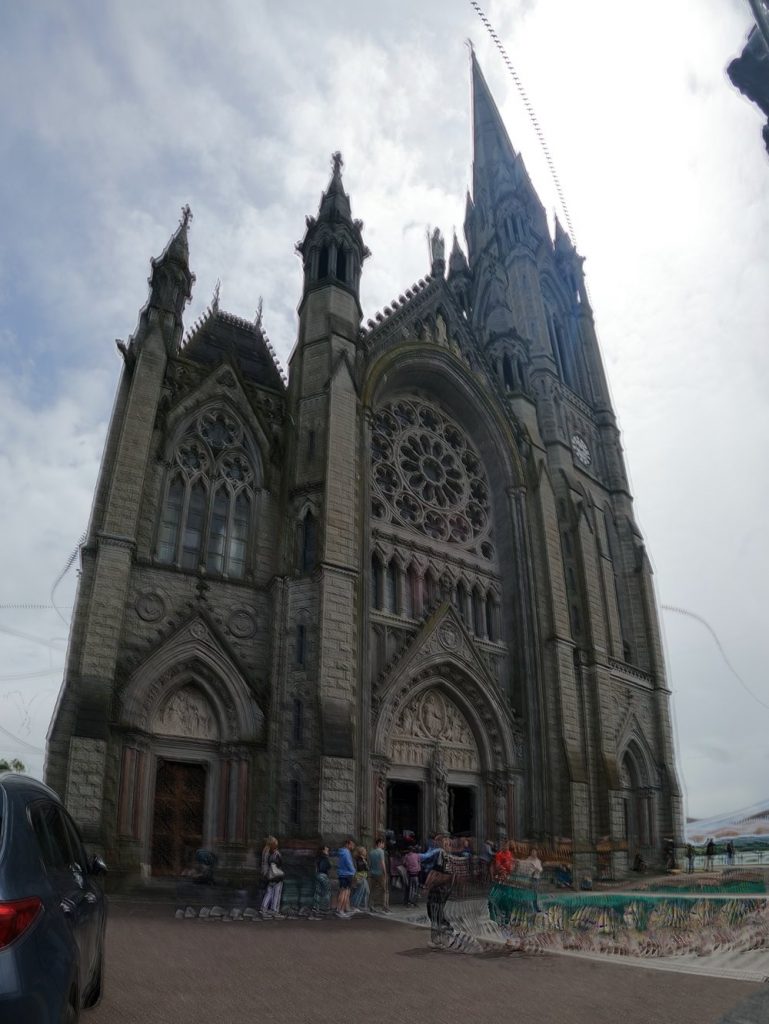
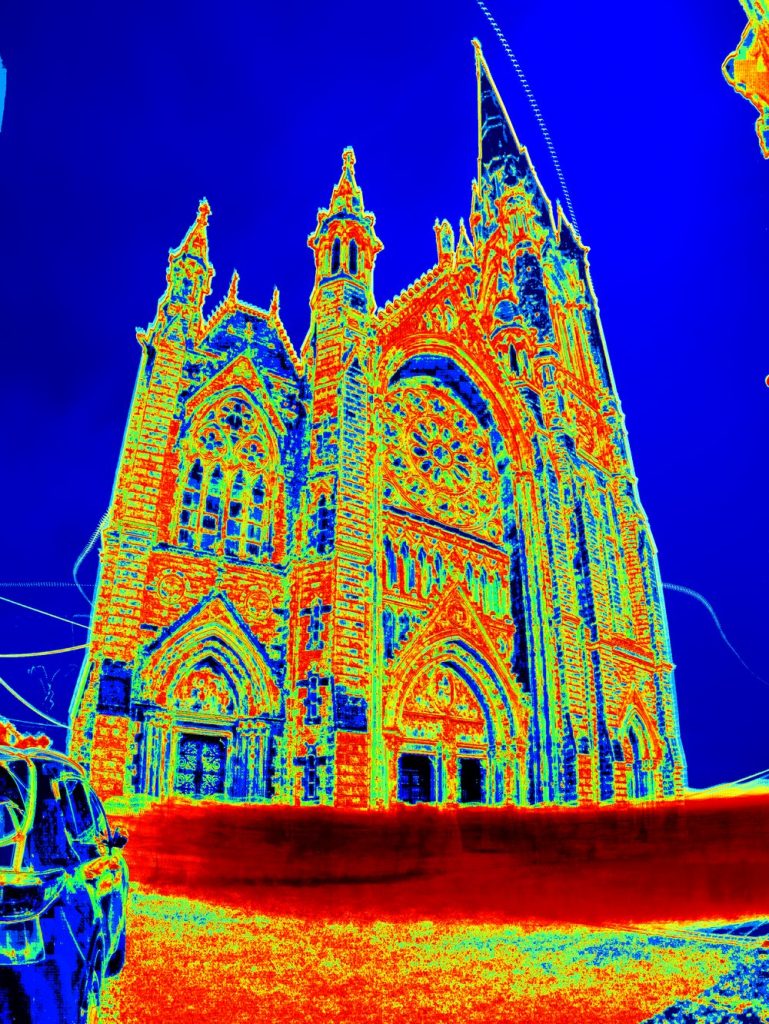
The queue outside, despite wind and rain, was phenomenal. A thousand or more people are reported to have visited in each of the last few days of the exhibition. I love the traces of the birds around the cathedral.
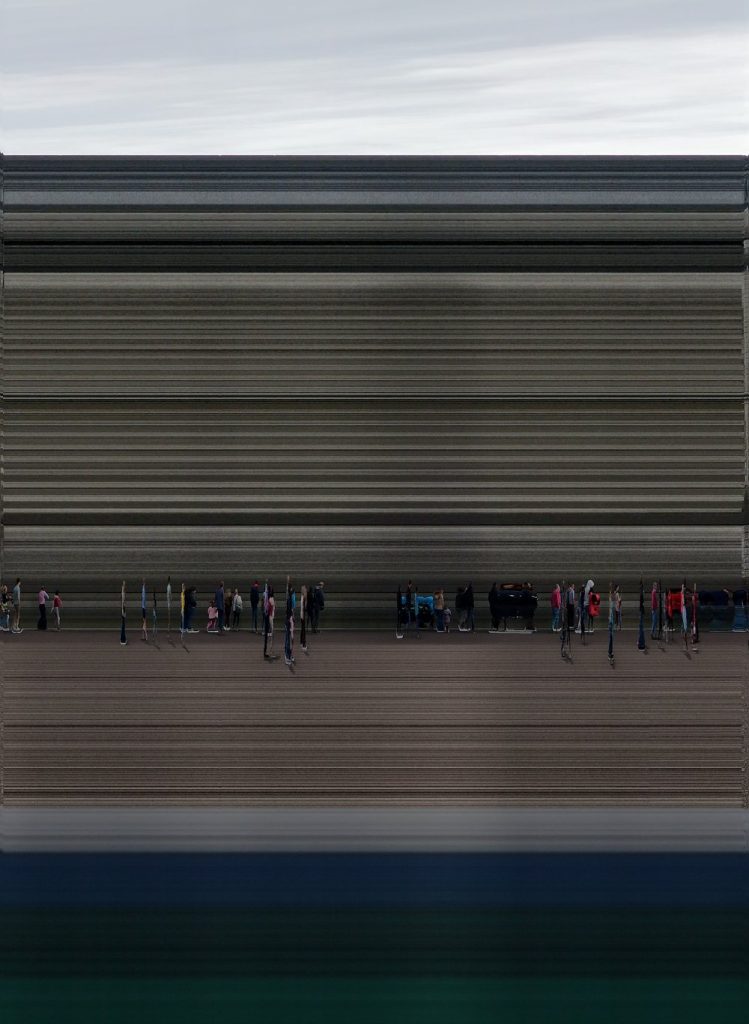
So yes, I manually counted them. There are 47 people in this slitscan of the queue entering the Cathedral in 93 seconds of video, or nearly 2,000 visitors per hour.
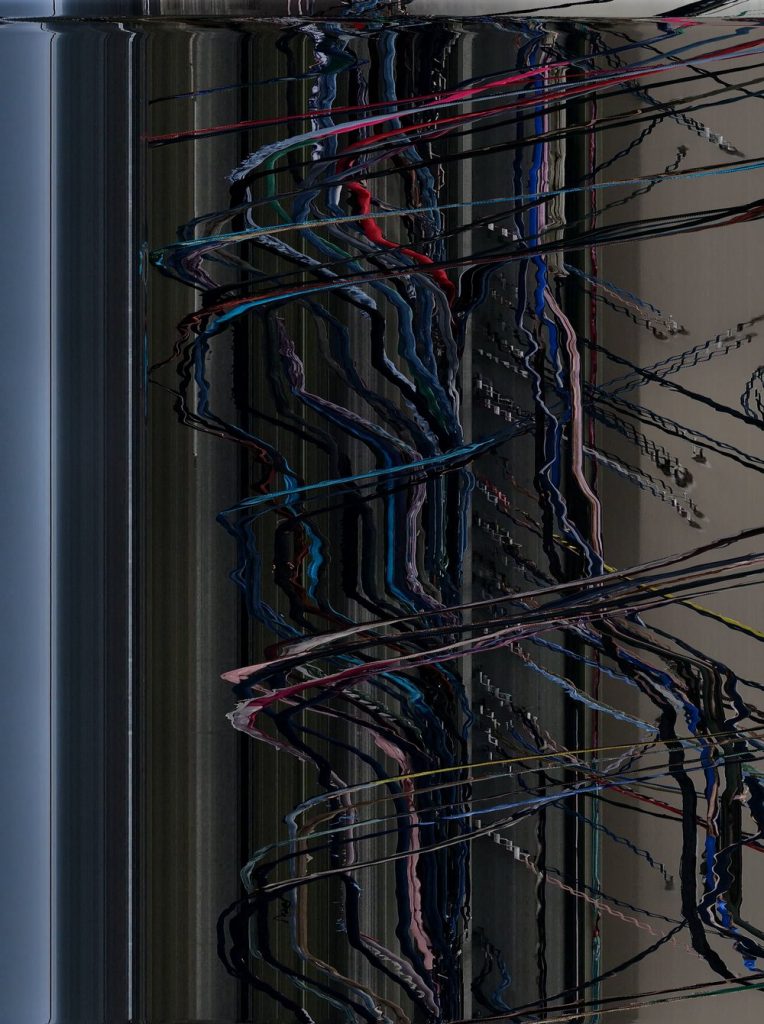
An interesting companion to the motion intensity heatmap, is this horizontal slitscan showing motion across the carpark. The heatmap shows the intensity of movement across the visual field of the carpark, where people are arriving and queuing. This slitscan shows people moving across a left-right slit centred on the entrance and exit, showing the complex interweaving of two tribes (arriving and departing) negotiating the use of the same ground.
More information
To read more and view some videos about Gaia have a look at the Gaia website and Luke Jerram’s own homepage. Gaia was brough to Cobh by the Cork Midsummer Festival.
